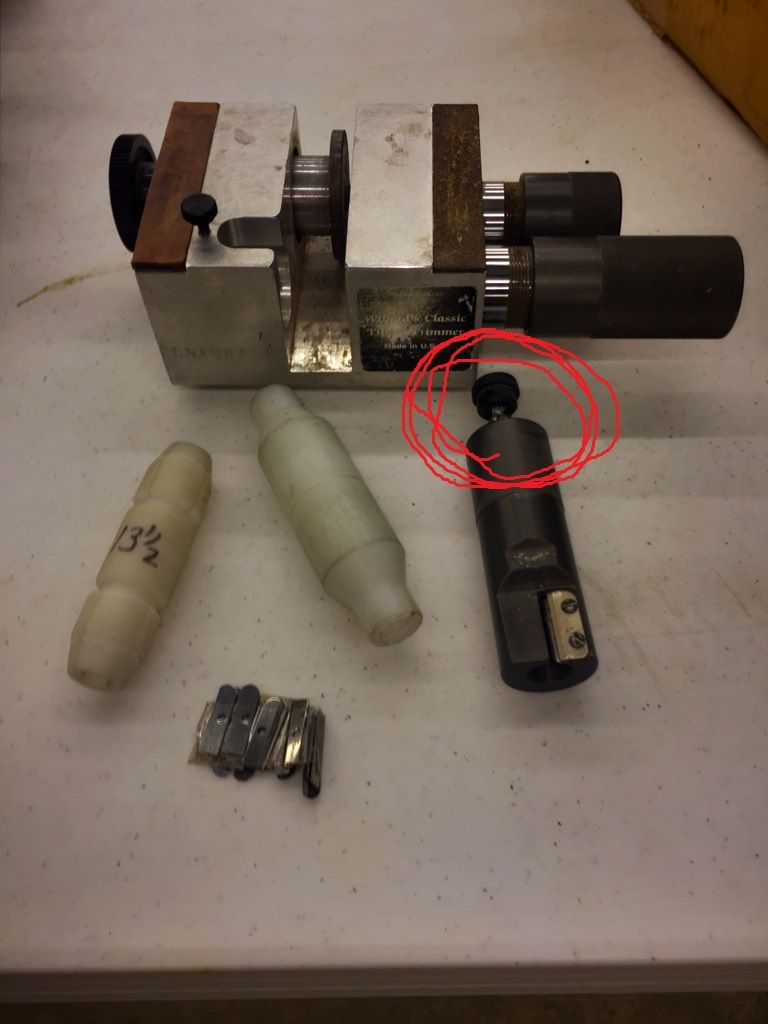Hello everyone!
Just bought myself one of these, and used it for the first time today. Thanks everyone for the reviews and tips I found here, and that helped me make a buying decision! Before anyone asks: got this new for a price at which I couldn't possibly buy a 220 VAC lathe.
First used the machine to trim the mushrooming off the tips on three "house cues" shafts, and of course ever so slightly trimmed into the ferrules of two of them, plus made a virtually unnoticeable dent into one, not sure if by under- or over-tightening the collet.
Also tried putting a yellow 3M Post-It around one shaft, with the collet chuck over it, but that'll only work with small diameter shafts (or larger collets - my machine came with two 13.5 mm ones). But it's really a matter of getting a feel for the positioning and tightening of the collets.
Then got adventurous and put a new tip on my favourite 20-year-old birdseye maple (softer than straight grain, demanding extra care!) shaft of my Southwest, admittedly after I noticed there's a GAUGE (a screw with a spring) built into the trimmer (the grey pencil-sharpener-like part), which the manufacturer simply forgets to mention on the DVD, or that scrap of paper of a "user manual" (LOL!) the machine comes with.
Makes me wonder, do all owners/users realize there's a gauge? It's technically impossible to trim into the ferrule if one uses it!
Especially if one's favourite tip comes with a flat top and at a consistent height (as e.g. my choice of Kamui Black S), one only needs to set the gauge correctly once, and could then use the trimmer blind-folded.
In a nutshell, I find machine well thought-out and -built, working perfectly, but the DVD is pretty useless (in other words, don't bother getting one if you find a used machine without manual, DVD or VHS cassette).
Greetings from Switzerland, David.
_________________
„J'ai gâché vingt ans de mes plus belles années au billard. Si c'était à refaire, je recommencerais.“ – Roger Conti
Just bought myself one of these, and used it for the first time today. Thanks everyone for the reviews and tips I found here, and that helped me make a buying decision! Before anyone asks: got this new for a price at which I couldn't possibly buy a 220 VAC lathe.
First used the machine to trim the mushrooming off the tips on three "house cues" shafts, and of course ever so slightly trimmed into the ferrules of two of them, plus made a virtually unnoticeable dent into one, not sure if by under- or over-tightening the collet.
Also tried putting a yellow 3M Post-It around one shaft, with the collet chuck over it, but that'll only work with small diameter shafts (or larger collets - my machine came with two 13.5 mm ones). But it's really a matter of getting a feel for the positioning and tightening of the collets.
Then got adventurous and put a new tip on my favourite 20-year-old birdseye maple (softer than straight grain, demanding extra care!) shaft of my Southwest, admittedly after I noticed there's a GAUGE (a screw with a spring) built into the trimmer (the grey pencil-sharpener-like part), which the manufacturer simply forgets to mention on the DVD, or that scrap of paper of a "user manual" (LOL!) the machine comes with.
Makes me wonder, do all owners/users realize there's a gauge? It's technically impossible to trim into the ferrule if one uses it!
Especially if one's favourite tip comes with a flat top and at a consistent height (as e.g. my choice of Kamui Black S), one only needs to set the gauge correctly once, and could then use the trimmer blind-folded.
In a nutshell, I find machine well thought-out and -built, working perfectly, but the DVD is pretty useless (in other words, don't bother getting one if you find a used machine without manual, DVD or VHS cassette).
Greetings from Switzerland, David.
_________________
„J'ai gâché vingt ans de mes plus belles années au billard. Si c'était à refaire, je recommencerais.“ – Roger Conti
